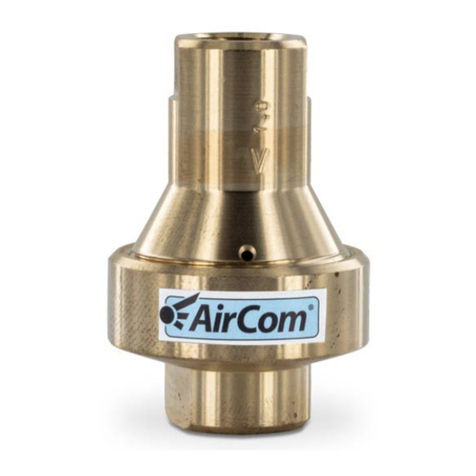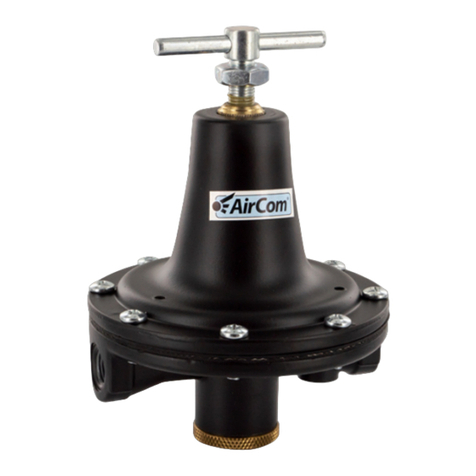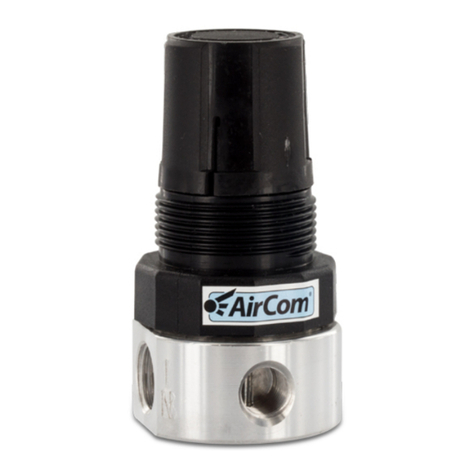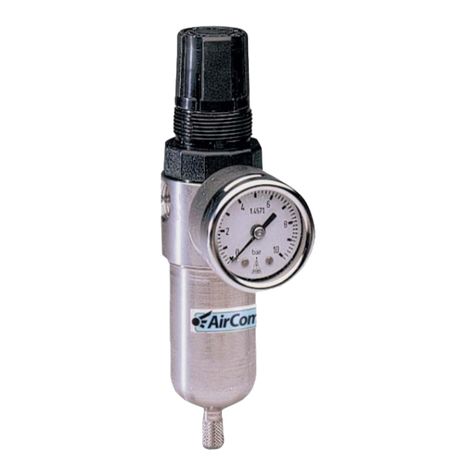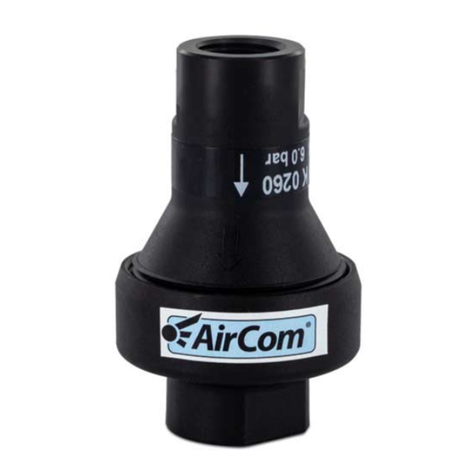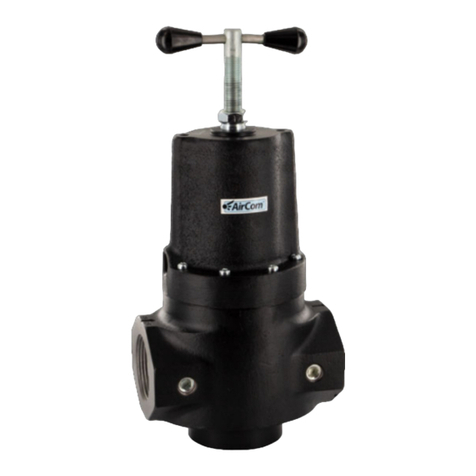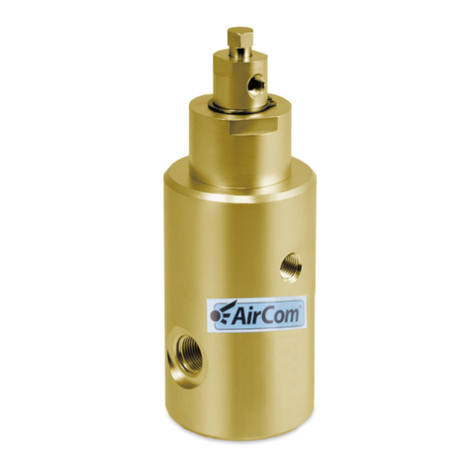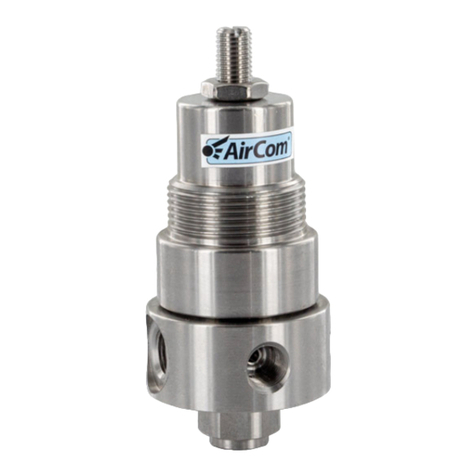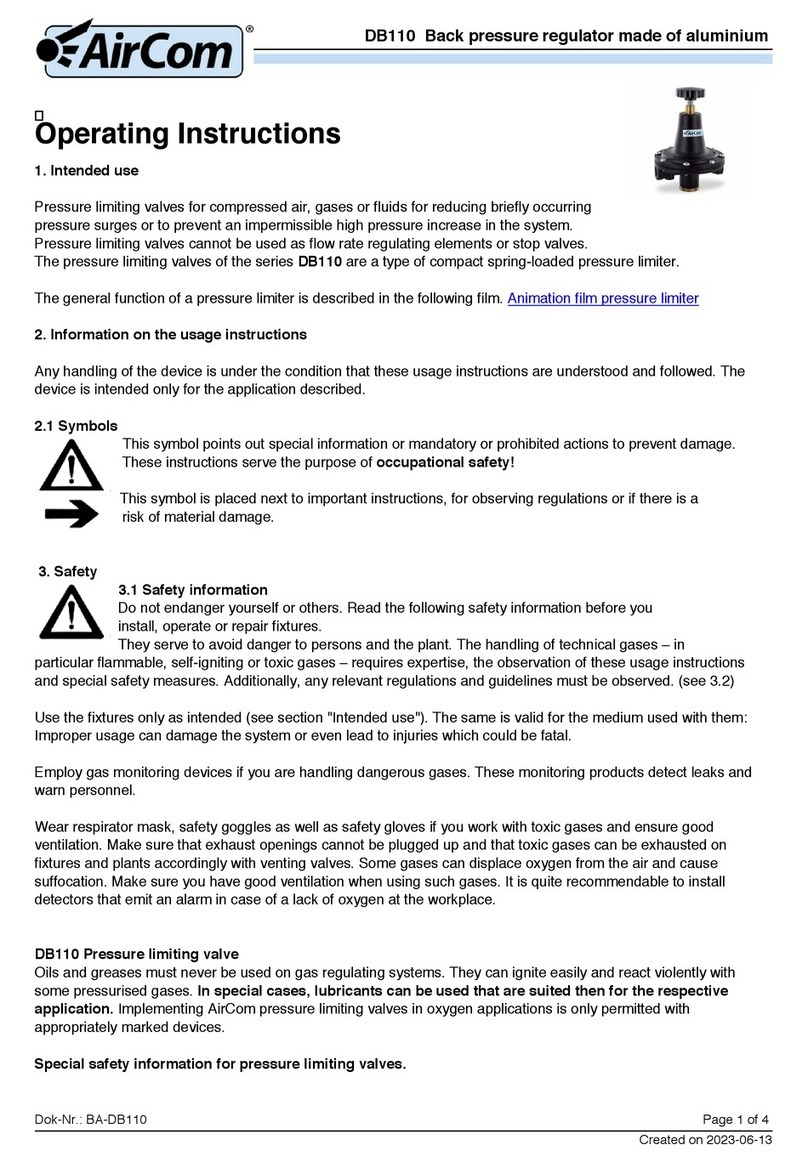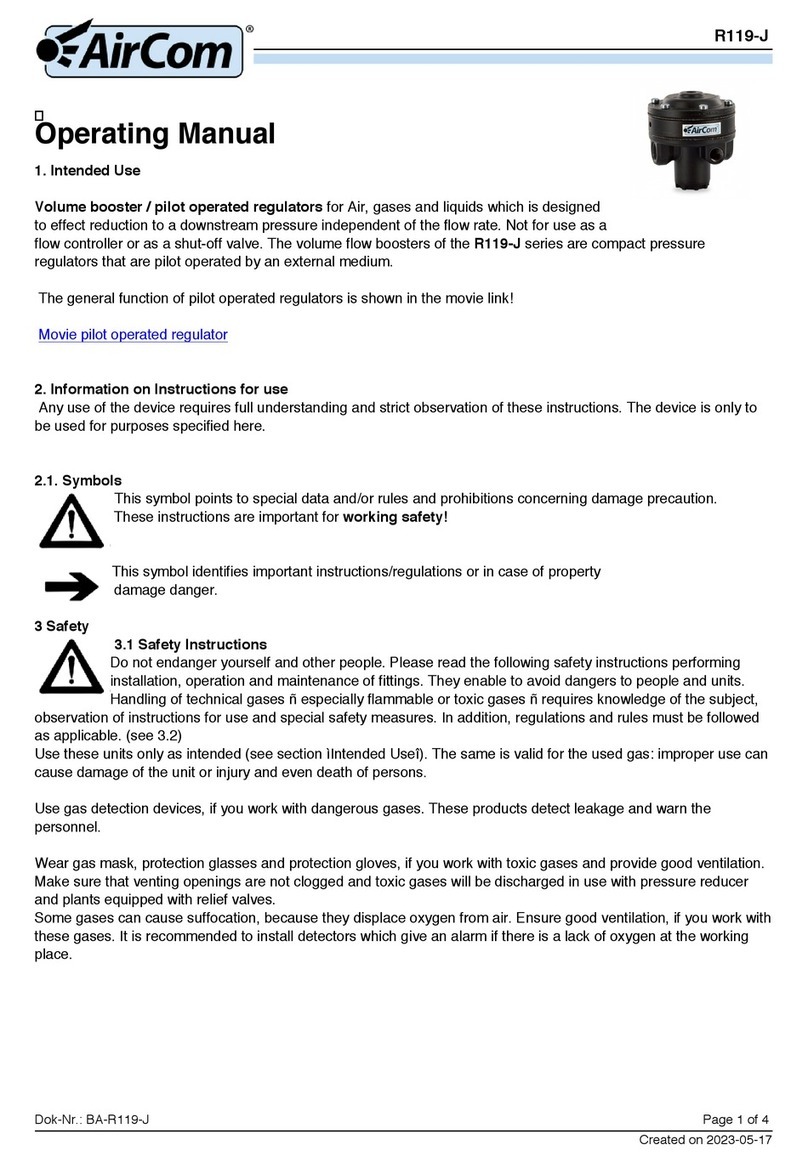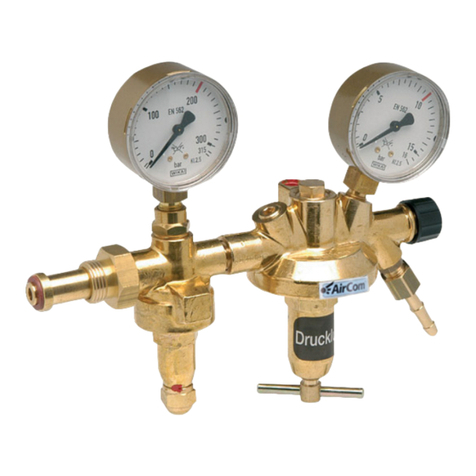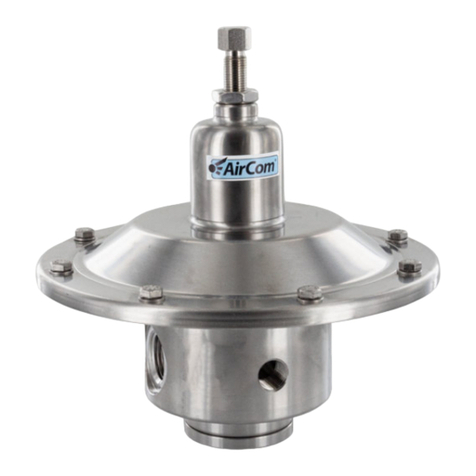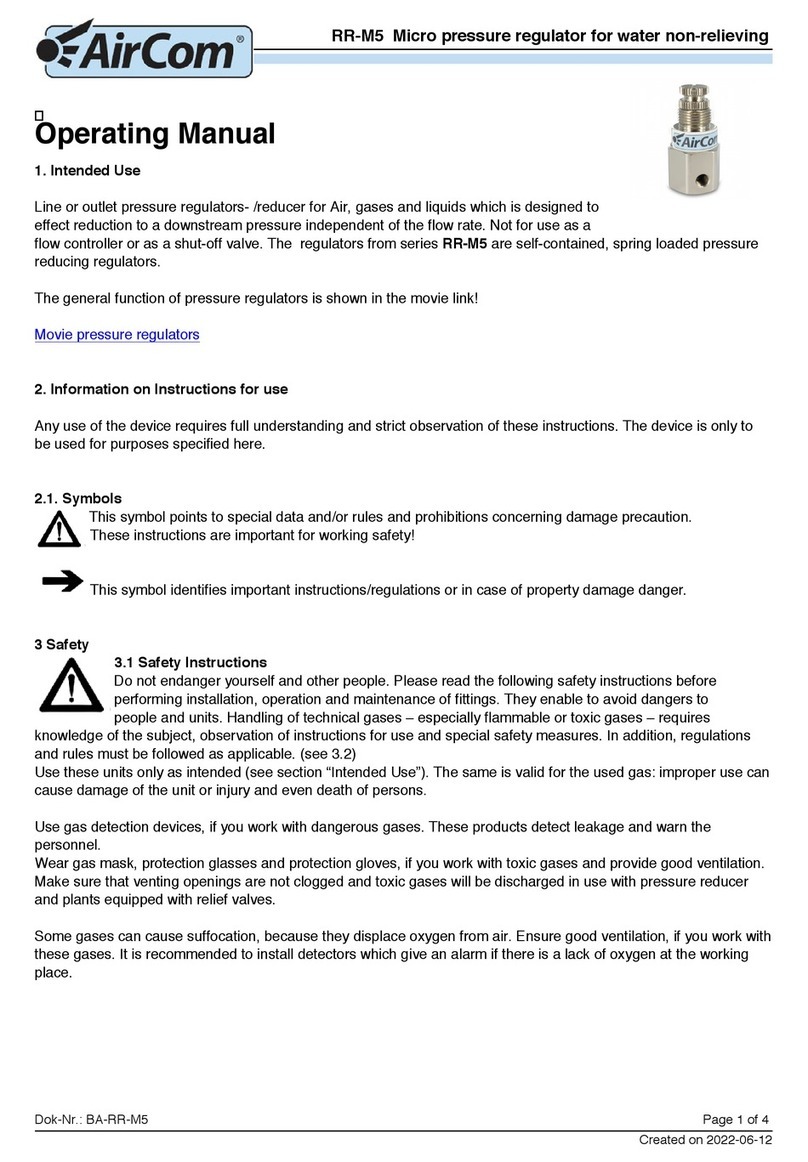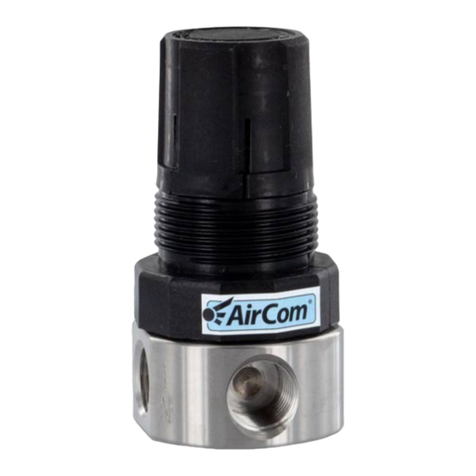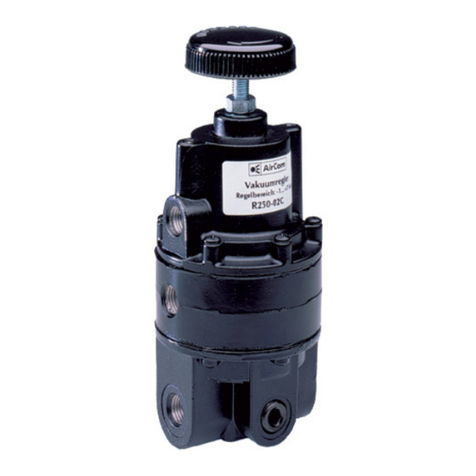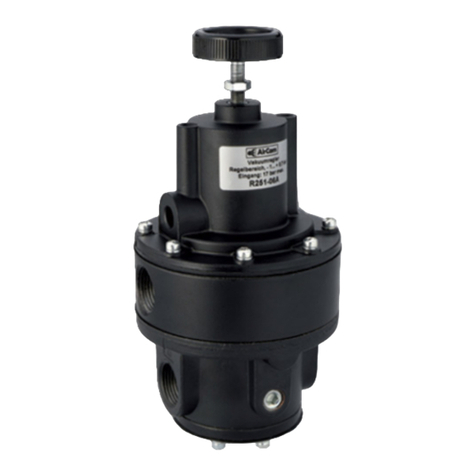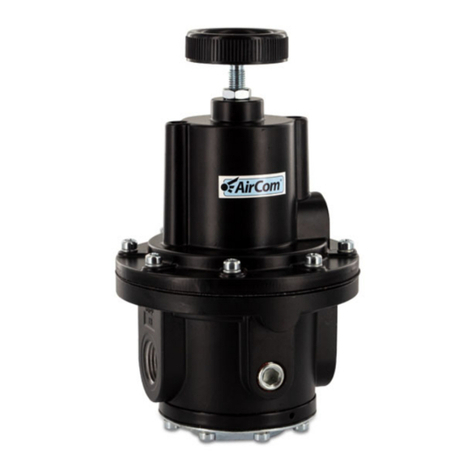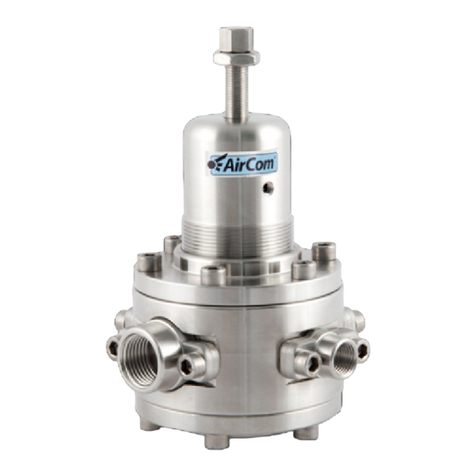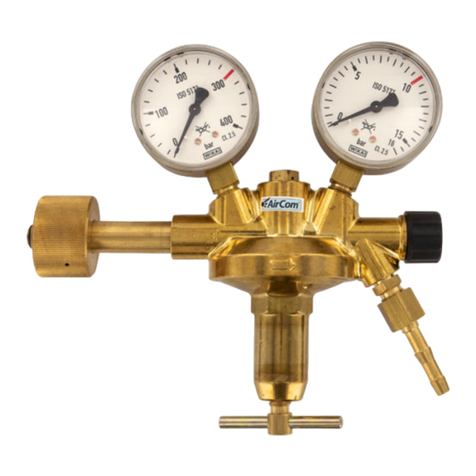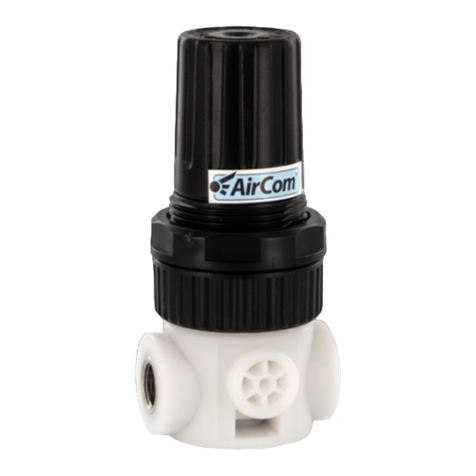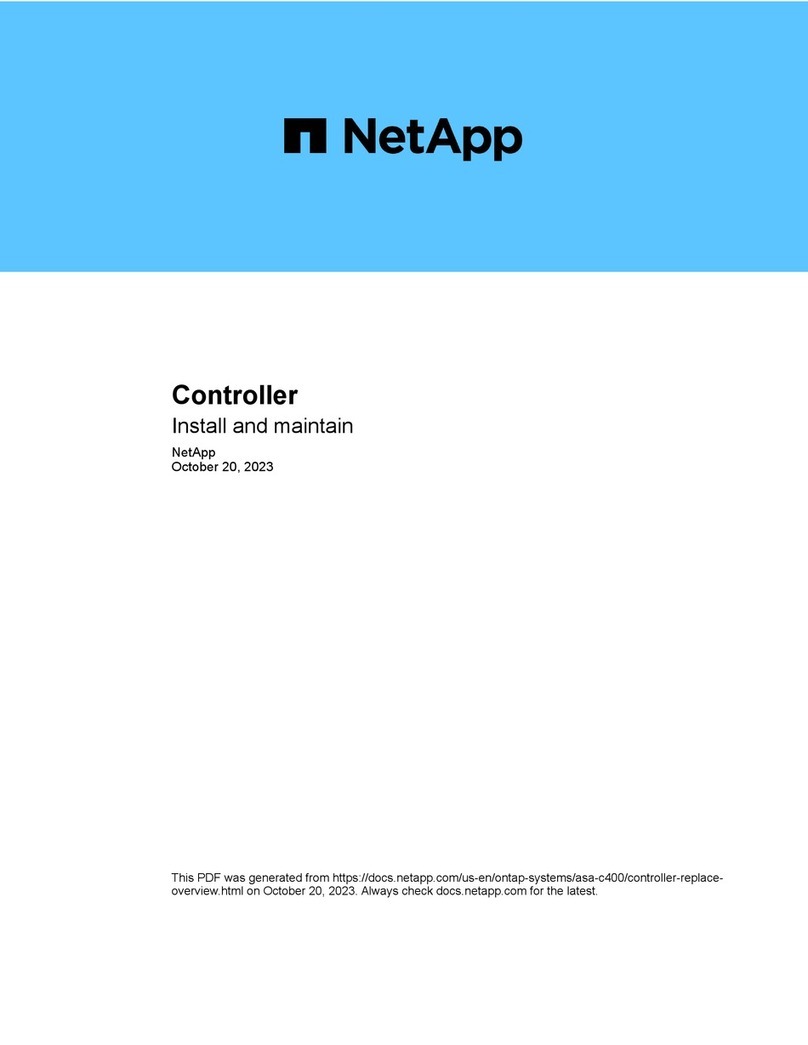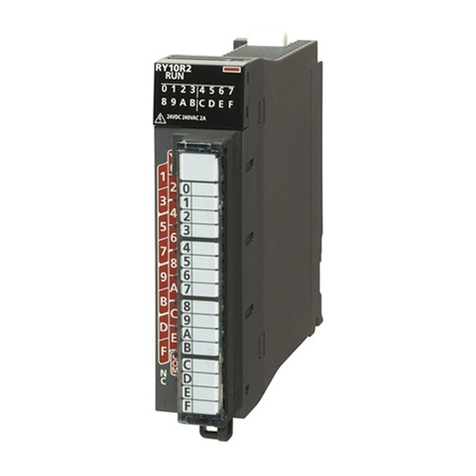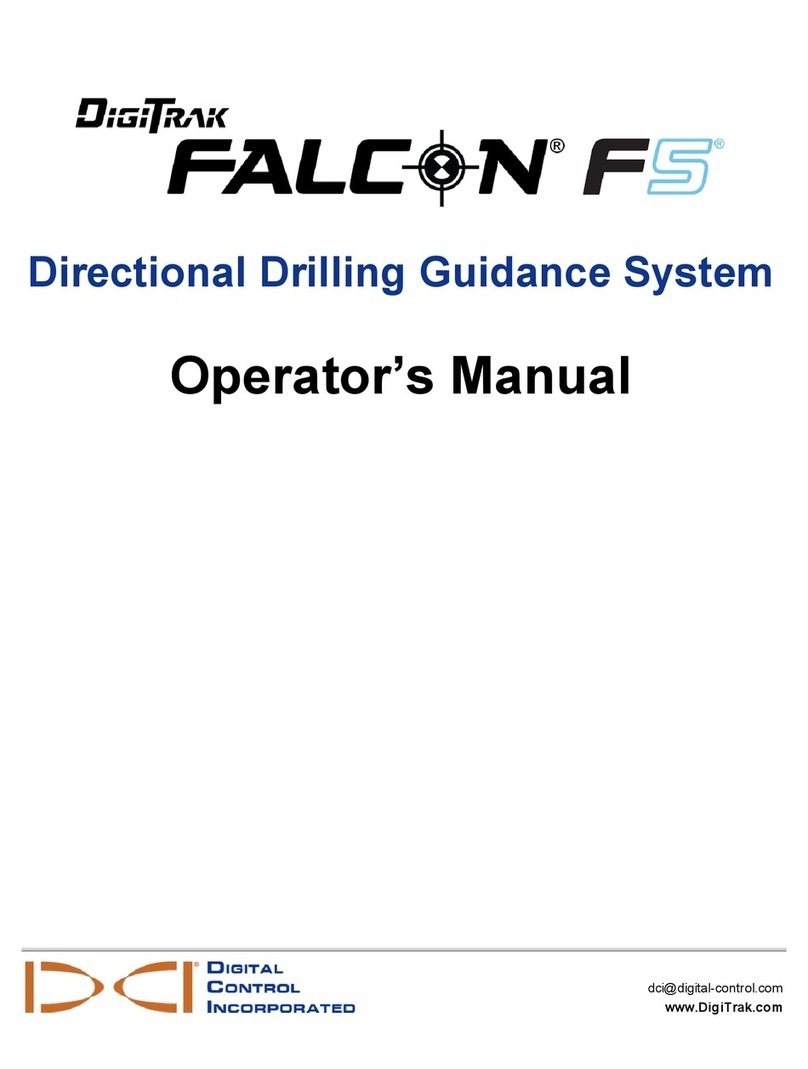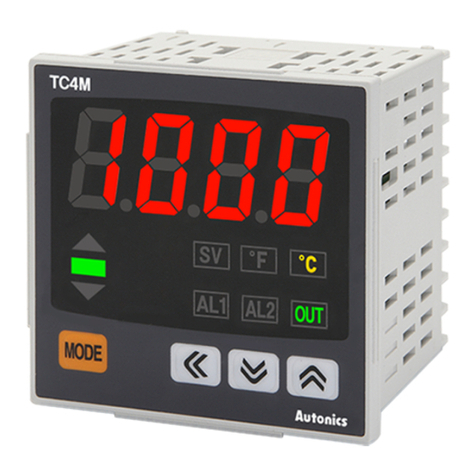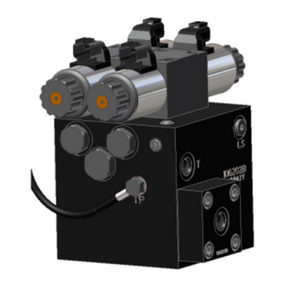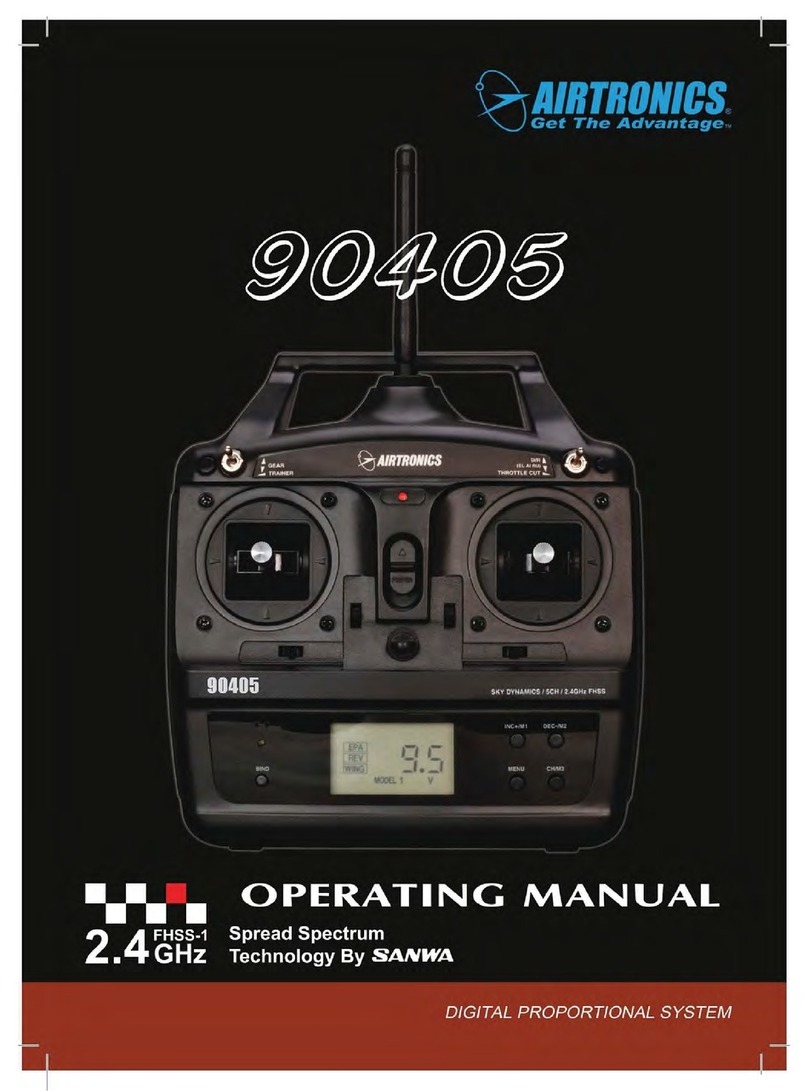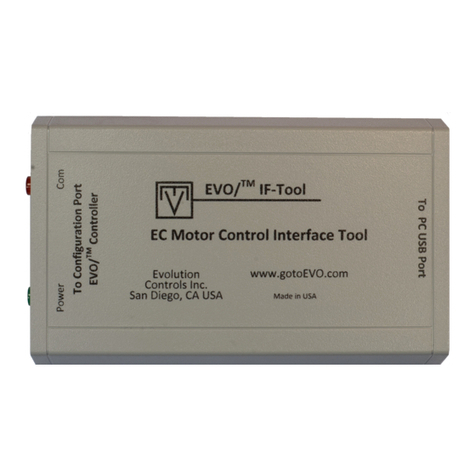AirCom B548 User manual

B548
Operating Instructions
1. Intended use
Filter pressure regulator for compressed air or gases, for filtering and reduction to a back
pressure independent of the flow rate. Filter pressure regulators cannot be used as flow
rate regulating elements or stop valves. The filter pressure regulators of the B548 series include the function of a
compact spring-loaded pressure regulator. In addition to pressure control, filter pressure regulators are equipped
with a filtration and water separation function.
The compressed air drawn in by the compressor contains countless fine dirt particles that plug up openings when
highly concentrated and at high speed and make movable parts sluggish. When compressed air cools down, the
dew point drops and larger amounts of water are separated depending on the atmospheric conditions. The results
are rusting compressed air tools, pneumatic components and pipe systems. The filter function separates moisture
and impurities from the compressed air, ensuring low-maintenance operation of pneumatic devices. The choice of
pore size of the filter elements depends on what is required. In the filter pressure regulator, the compressed air or
gas is first cleaned, then the pressure is reduced.
The filter pressure regulators of the B3000 and BM series are not equipped with a twist cap. Therefore, by design,
they are not suited for separating liquids, only for filtering out solid particles.
The general function of a filter pressure regulator is described in the following short movie.
Animation film Filter pressure regulator Animation film Compressed air filter
2. Information on the usage instructions
Every handling of the device is under the condition that these usage instructions are understood and followed. The
device is intended only for the application described.
2.1 Symbols
This symbol points out special information or mandatory or prohibited actions to prevent damage.
These instructions serve the purpose of occupational safety!
This symbol is placed next to important instructions, for observing regulations or
if there is a risk of material damage.
3. Safety
3.1 Safety information
Do not endanger yourself or others. Read the following
safety information before you install, operate or repair fixtures.
They serve to avoid danger to persons and the plant. The handling of technical
gases – in particular flammable, self-igniting or toxic gases – requires expertise, the observation of these usage
instructions and special safety measures. Additionally, any relevant regulations and guidelines must be observed.
(see 3.2)
Use the fixtures only as intended (see section "Intended use"). The same is valid for the gas used with them:
Improper usage can damage the system or even lead to injuries which could be fatal.
Employ gas monitoring devices if you are handling dangerous gases. These monitoring products detect leaks and
warn personnel.
Wear respirator mask, safety goggles as well as safety gloves if you work with toxic gases and ensure good
ventilation. Make sure that exhaust openings cannot be plugged up and that toxic gases can be exhausted on
Dok-Nr.: BA-B548 Page 1 of 4
Created on 2022-08-17

B548
fixtures and plants accordingly with venting valves. Some gases can displace oxygen from the air and cause
suffocation. Make sure you have good ventilation when using such gases. It is quite recommendable to install
detectors that emit an alarm in case of a lack of oxygen at the workplace.
Oils and greases must never be used on gas regulating systems. They can ignite easily and react violently with
some pressurised gases. In special cases, lubricants can be used that are suited then for the respective
application.
Implementing AirCom filter pressure regulators in oxygen applications is only permitted with appropriately marked
devices.
Special safety information for filter pressure regulators.
If devices are connected to the filter pressure regulator, it needs to be ensured by special protective precautions that
no dangerous pressure can build up inside. The secondary venting of a filter pressure regulator (if equipped) is not
suitable as protection for these devices.
When changing the type of gas, the filter pressure regulator should be purged sufficiently with inert gas.
For technical gases, use only filter pressure regulators with internal screw plugs and without drains.
3.2 Regulations and guidelines
The following regulations and guidelines must be observed in Germany, depending on the case:
- Principles of prevention
- Operation of working materials
- Guidelines for laboratories
- Ordinance on Industrial Safety and Health
- Data sheets "Hazardous substances"
4. Installation
4.1 Transport and packaging
When the filter pressure regulator is delivered, please check it for possible transport damage or defects. The
connection openings of the filter pressure regulator may be closed for transport by caps to prevent dirt particles from
entering. Do not remove the caps until just before installation. In case of a later disassembly, the connection
openings need to be closed again before being put into storage or being transported. This can also be done
provisionally by a strip of adhesive tape that is taped over the opening. The transport of the filter pressure regulator
(e.g. sending to customer service) may be done only in a suitable study package.
4.2 Preparation
Turn the adjusting screw (hand wheel, spindle, hexagon) on the filter pressure regulator counterclockwise until the
range spring is completely relaxed.
The system into which the filter pressure regulator should be installed has to be depressurised.
Connect the filter pressure regulator – connection threads have to match.
To ensure the filter pressure regulator is in perfect working condition, all lines needs to be purged prior to installation.
Deposits and other foreign objects can cause damage to the valve seat, and thus interfere with the regulating
function or make it impossible. No lubricants may be used during installation. The filter pressure regulator may soil
and there is a risk of burning out if oxygen or nitrous oxide is used.
The filter pressure regulator has to be installed in the line in such a way that the gas flows in the direction of the
arrows stamped/taped on the housing (IN to OUT).
The installation position must be observed. The container always has to be at the bottom.
4.3 Operation
The supply pressure has to be switched on slowly. The manual drain valve has to be closed.
A semi-automatic or automatic drain valve does not close until an operational pressure of 2 bar is achieved.
Dok-Nr.: BA-B548 Page 2 of 4
Created on 2022-08-17

B548
In the case of a filter pressure regulator with manual or semi-automatic drain valve, the condensate must be drained
regularly; this is not necessary for a filter pressure regulator with automatic drain valve.
The desired output pressure is set by turning the adjusting screw (hand wheel, spindle, hexagon). Turning clockwise
increases the output pressure, turning counterclockwise decreases the output pressure. If the filter pressure
regulator is not self-relieving (without secondary venting), the medium must be able to drain from the outlet of the
filter pressure regulator; otherwise the outlet pressure will not be reduced.
The general function of a filter pressure regulator is described in the following short movie.
Animation film Compressed air filter
Fine adjustments should always be made in the direction of pressure increase in order to reach the exact setting
point. The filter pressure regulators function with all media that are compatible with the specified materials. The filter
pressure regulators may only be operated within the values specified in the technical specifications. An operation
outside of the permitted values can overload and damage the seals.
Warning:
With some devices, "overtightening" the adjusting screw (hand wheel, spindle, hexagon) can lead to a much higher
back pressure than the maximum factory-specified value. Operating a filter pressure regulator with a much higher
back pressure than the factory-specified pressure can have the following consequences:
If the setting spring is compressed to a value near the block length, it will show a greatly changed characteristic
curve with a negative effect on the regulating function of the filter pressure regulator (e.g. incomplete closing of the
regulator main valve, indicated by a creeping delayed rise or fall of the back pressure).
The internal parts will be subjected to loads beyond their design limits, which might deform them permanently.
Damages due to an excessively high setting of the back pressure are excluded from any warranty.
4.4 Shutting down
• Close inlet.
• Consume remaining medium completely or drain completely.
• Turn the hand wheel counterclockwise until the pressure range spring is completely relaxed.
• Once the pressure has been reduced completely, the housing can be opened for maintenance.
5. Maintenance
Do not carry out any maintenance / repair on fixtures that are under
pressure!
Repair and maintenance and may only be carried out by trained technicians! Under normal operating conditions, an
inspection is recommended every 6 months during which the device is inspected for external damage and the
function is checked. If operating conditions are unusually excessive, shorter maintenance intervals may be
necessary.
5.1 Troubleshooting
1. Problem: After adjusting the regulator, the back pressure continues to rise even without turning the adjusting
screw (hand wheel, spindle, hexagon). Possible cause: The valve seat is dirty or damaged. Measure: Clean or
replace the valve seat.
2. Problem: Leak around or at the spring cap.
Possible cause:
1. Retighten the spring cap.
2. There is dirt or there are scratches on the valve tappet / diaphragm / piston. Measure: Replace the diaphragm /
piston or the tappet (repair kit)
Dok-Nr.: BA-B548 Page 3 of 4
Created on 2022-08-17

B548
3. Problem:
Flow rate too low
Possible cause: The filter element is soiled.
Measure: The filter element needs to be cleaned or replaced.
4. Problem:
Leak near or at the drain
Possible cause: Manual drain valve is loose; semi-automatic or automatic drain valve is soiled
Measure: Screw manual drain valve in tight; disassemble semi-automatic or automatic drain valve and clean or
replace.
5.3 Spare parts
Only original spare parts may be used for repairs. Replacements are to be carried out only by trained personnel. You
can find spare parts at www.aircom.net.
5.4 Repairs
Defective devices can be sent in to AirCom Pneumatic GmbH. After a thorough inspection, a cost estimate is
created with results of the inspection.
Filter pressure regulators that are not used with compressed air or neutral gases need to be cleaned or
purged with inert gas before they are sent in. Additionally the medium used as well as a fault description
needs to be listed in the cover letter.
Dok-Nr.: BA-B548 Page 4 of 4
Created on 2022-08-17
Table of contents
Other AirCom Controllers manuals
Popular Controllers manuals by other brands
![Supmeter BST106-B60[A] Operation manual Supmeter BST106-B60[A] Operation manual](/data/manuals/1s/q/1sqb6/sources/supmeter-bst106-b60-a--manual.jpg)
Supmeter
Supmeter BST106-B60[A] Operation manual

GEORGE FISCHER
GEORGE FISCHER SIGNET 9040 Intelek-Pro instruction manual

Ricoh
Ricoh E-7100 Start guide
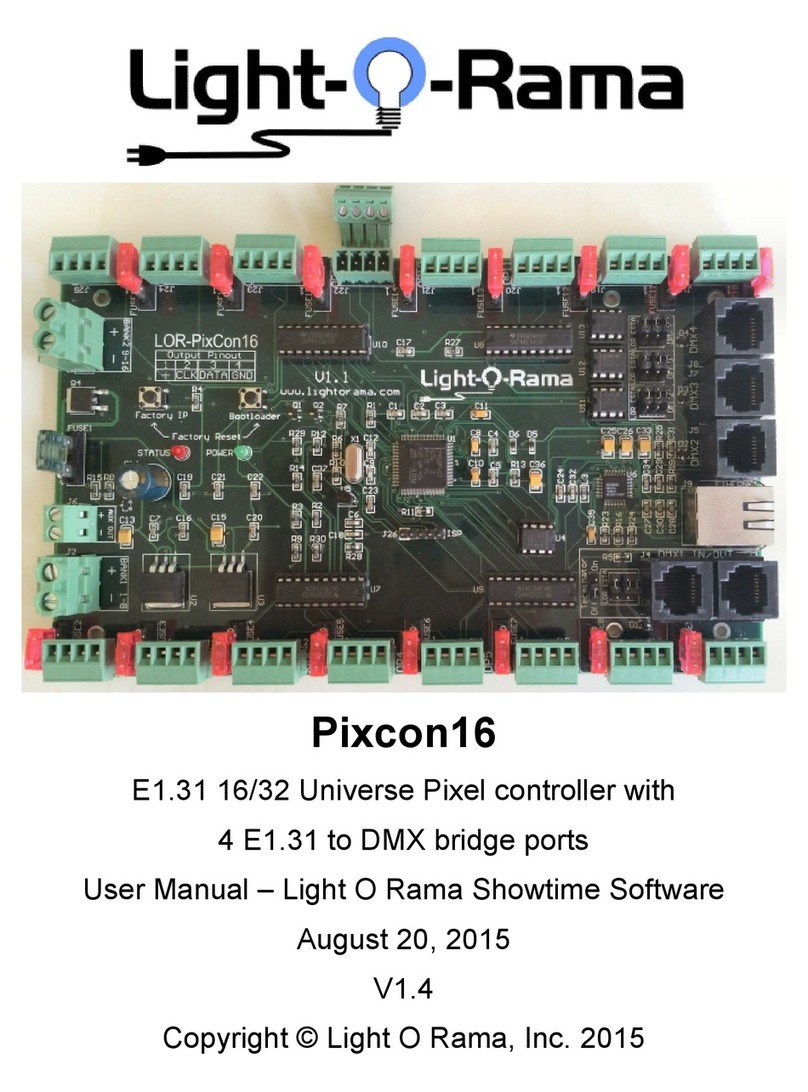
Light O Rama
Light O Rama Pixcon16 user manual

DUNIWAY Stockroom
DUNIWAY Stockroom Terranova 960 instruction manual
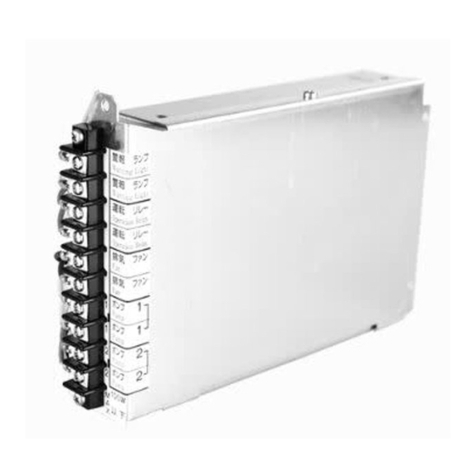
Noritz
Noritz SCU-401-12M installation manual
